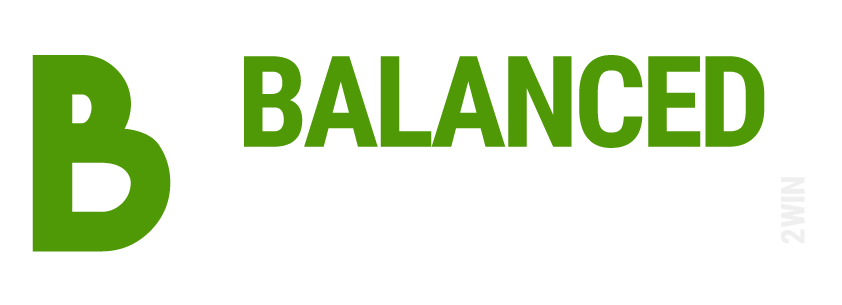
EFQM and Balanced Scorecard for improving organisational performance – Part 3 of 3
Conclusions
Using EFQM and BSC
The use of EFQM and BSC can add value to the performance of an organization both in public and private sector. The two models may stem from the different schools of Quality Management and Performance Measurement, but effective use is possible by building on the commonalties of each, most importantly, the shared goal of performance improvement.
Value is optimized where the models are used in a complementary approach to reduce the apparent weaknesses in each, rather than attempting to develop an artificial new construct.
EFQM can helps managers understand the principles of organizational excellence necessary to meet customers rising expectations, and take a more holistic view to performance improvement. It helps in understanding the principles of causality that underpin a Balanced Scorecard. It also counters the more narrow, organizational-specific focus of a BSC.
In turn a BSC helps focus performance on the objectives of an organization and makes a clear link with the processes needed for achievement. It addresses the lack of results focus within EFQM and better communicates understanding of strategic objectives and enables a more effective employee contribution.
Strategy Development
Use of both models is not the complete answer. EFQM, like a number of quality systems, does not do strategy; it addresses operational excellence. If the company strategy is flawed, failure may still result. Heller, reporting on quality approaches in Europe, used a medical analogy to highlight the potential consequences:
‘The quality of the operation was successful, but the patient still died’
The BSC may reside more in strategy but in the definition and communication rather than the creation. If it’s the wrong strategy, but better understood and more quickly followed, organizational failure may be heightened not lessened. The lessons from most research into BSC make depressing reading, with failure rates reported in the order of 70%.
The external organisations recognised the need for an additional approach, in terms of developing and reviewing an effective strategy. Swedish Customs had also made strategy development a feature in their BSC through use of a futures perspective.
The fact that both models are only a partial answer does not negate their use, but creates a context for assessing their effectiveness. In terms of practical application the external organisations had sought to introduce complementary tools rather than develop a whole new organisational approach.
Critical Success Factors
A number of critical success factors were evident in the external organisations use of both EFQM and BSC.
Single Team Ownership Of Quality And Performance Measurement
This was a major factor in the success of EFQM/BSC use. Each of the organizations had a single team who owned the strategic, planning and business improvement process. They develop a deep understanding and competence in organizational capability and performance. They may also provide continuity on such issues particularly when Board personnel change.
The team acts as both experts to the Board in facilitating understanding and ownership of performance and quality management, and as the focal point in communication to the rest of the organization. They are able to direct the Board in raising crucial performance issues.
Top Team Commitment
Top level ownership is a prerequisite to lever the benefits of both models. It requires a transformational style to effectively lead the organization and a need to understand the nature of improvement approaches. This was commonly achieved by top managers actually being trained in the use of both models and additional process improvement approaches. For instance, at Siemens, the whole Board had been trained in Kepner Tregoe (the corporate problem solving approach).
The presence and support of a single quality and performance team also helps develop and maintain top team ownership.
‘Learning’ Mindset’
A corporate willingness to learn and develop is also important. The organizations had learned from their initial approaches to model use, particularly in relation to EFQM. They had generally moved away from operational self-assessment towards a more corporate approach, relying on an understanding of EFQM within the organization. The organizations were also ready to implement new ideas quickly and learn as they went along.
People in the organizations were also engaged and entrusted to improve things, facilitated by a clearly communicated corporate strategy. The need to effectively leverage knowledge, as a core value-adding process was both recognized and managed.
Partnering
Partnering was a key competency. The organizations have strong relationships with external partners including their customers, suppliers, academic bodies, and stakeholders. They routinely seek out new partnering opportunities. These arrangements are the way they lever mutual business benefit not just something that is ‘nice to do’.
The best practice organizations were constantly seeking to broaden their understanding of the business environment, both current and future. Their deepening understanding of all these interrelationships will enable them to anticipate future conflicting requirements of customer and stakeholder segments: such developments are also reflected in the new emphasis on corporate social responsibility in the revised EFQM Model.
Corporate Problem Solving
Moreover, the organizations had quickly realized that EFQM and BSC were only partial answers to corporate success. They had introduced new problem-solving approaches to develop organizational performance. Siemens used Kepner-Tregoe, NIE, use six sigma, and Philips had MEDIC.
These tools are non-linear, more complex in nature and designed to address the issues in today’s business environment. Some were the result of the ‘learn and do’ mindset approach and discovered through partnering. Each of the tools was integrated throughout the organization forming a common language and maximizing the value of improvement activity.
Finally
These conclusions formed the basis of recommendations made to the Inland Revenue Departmental Management Committee on improving the approach and business benefits of quality management. The recommendations included:
- A clear business benefit approach to EFQM with clear links to improved service delivery,
- Reducing the bureaucracy of EFQM by focusing on managing by the concepts of excellence
- Single team ownership of quality with stronger links to strategic/performance management
- Greater alignment of EFQM activity to support BSC measures
- The recommendations were accepted on the 17th December 2002. Work on the detailed implementation is presently continuing with key stakeholders.
There has also been interest from wider Whitehall and the academic community in the findings from the research. The Quality Public Services team is presently examining how the research may be developed for the future.
Click here to read Part 1 of 3 | Click here to read Part 2 of 3

